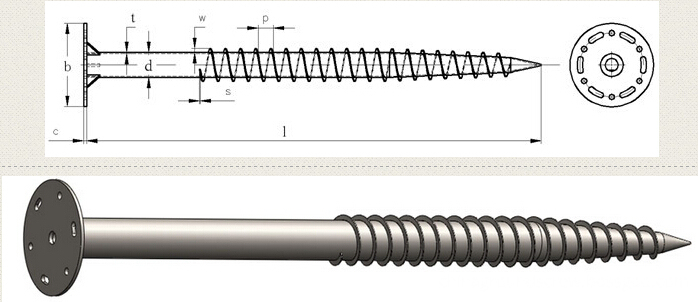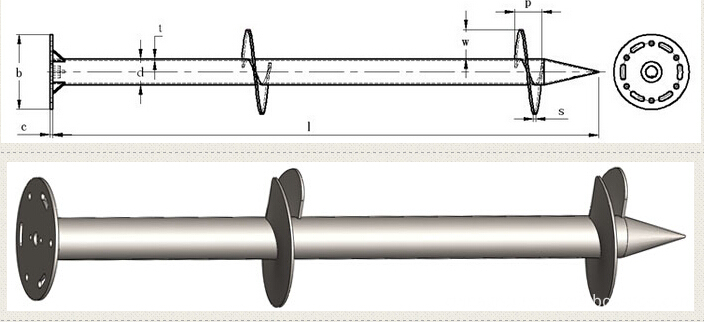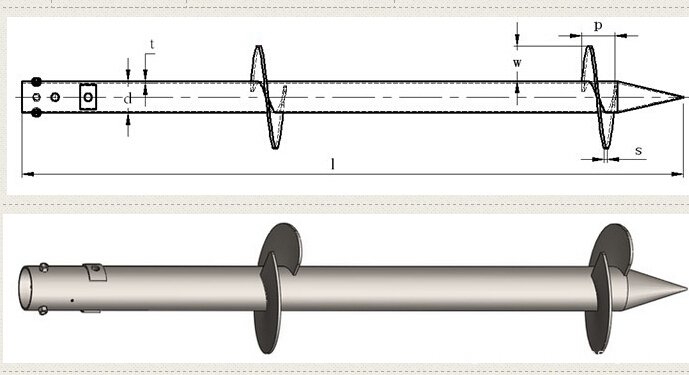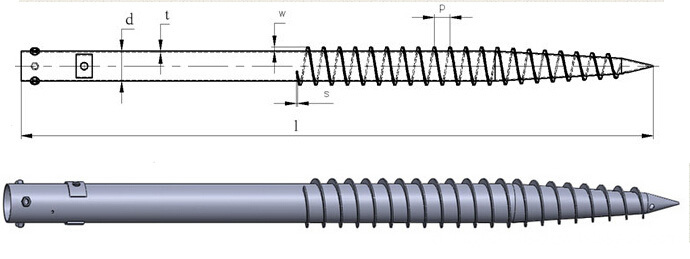(II) In the first quarter, the domestic alumina self-sufficiency rate increased significantly. In the first quarter, the alumina import scale was significantly reduced. In January and February, the alumina imports amounted to 34,220,000 t, which was at a historically lower level. The degrees of dependence on alumina imports were 11.4% and 7.8%, respectively, down 9.7 and 7.1 percentage points from the same period in 2010. From a longitudinal perspective, the dependence on alumina imports has dropped from more than 50% in the first half of the 21st century to less than 10% at present, reflecting the substantial increase in domestic alumina self-sufficiency rate.
The decline in the scale of alumina imports on the one hand is due to a substantial increase in domestic production. In January and February, domestic alumina production increased significantly. According to the average annual production capacity of 42 million tons, the capacity utilization rates in January and February were as high as 75.7% and 74.8%, respectively, an increase of 4-9 percentage points from the second half of 2010. In January, the output reached 2.655 million tons, a year-on-year increase of 6.29%, which was the highest level in history. In February, the output was affected by the Spring Festival holiday, which fell slightly by 1.2% from the previous month, but increased by 11.52% year-on-year. The output scale was still very high.
On the other hand, the low import price and the shrinking of import profit space are also important reasons. According to the input-output ratio of 2:1 alumina and electrolytic aluminum, the domestic alumina market continued to be in an oversupply situation in the first quarter. The surplus in January and February was 38.9 and 224,000 t, respectively, which suppressed domestic alumina to some extent. Price increase trend. It is understood that from January to March, the internal and external price of alumina dropped from 7.34 at the beginning of the year to 6.82 in late March, with a cumulative decrease of 7.1%. It shows that domestic alumina prices are relatively low and traders’ import enthusiasm is weak.
(III) In the first quarter, the net imports of electrolytic aluminum increased, and the scale of net export of aluminum alloy and aluminum increased significantly. In January and February, domestic electrolytic aluminum output was 129.9 and 1.306 million tons, respectively, down 2.7% and 0.4% year-on-year, respectively. 1-2 The cumulative monthly decrease was 1.55%; the capacity utilization rate was 70.8% and 71.2%, respectively, which was an increase of about 5 percentage points from the end of the previous year.
The continuous domestic net imports of primary aluminum in January and February were 33,672t and 17,371t respectively, representing an increase of 8.9% and 20.4% year-on-year, respectively. The apparent consumption was 1.332 million tons and 1.323 million tons, respectively, a cumulative increase of 1.5% year-on-year.
In January and February, the output of aluminum alloys was 278.9 and 2.68 million tons, respectively, an increase of 33.0% and 44.9% year-on-year, respectively, but a decrease of 11.1% and 1.1% respectively.
The net export volume of aluminum alloys rose slightly after the first increase, and the growth rate was 9.8% and -47.1% respectively. In January-February, net exports of aluminum alloys totaled 74902 tons, an increase of 96.1% year-on-year.
Domestic aluminum output continued to decline in January and February, with year-on-year declines of 11.4% and 8.9%, respectively, but still maintained rapid growth, with an increase of 37.1% and 53.48%, respectively. The cumulative January-February output increased by 44.45% year-on-year.
In January and February, the domestic aluminum net export volume rose first and then decreased, which were 16.8 and 114,000 t, respectively, an increase of 22.1% and -32.1% from the previous quarter and a cumulative increase of 49.0%. Among them, net exports accounted for 8.3% of total domestic output in January, the highest since August 2010. The apparent consumption of copper in January and February increased by 43.5% and 20.0% respectively year-on-year, accumulating 31.4% year-on-year.
(IV) The growth rate of sales of commercial housing has slowed down significantly, and the amount of aluminum used in building decoration and other industries has decreased. Since mid-2010, the real estate control policy of successive attacks has allowed the popular property market to gradually calm down, and the sales of real estate have been chilled. February is the period of the domestic Spring Festival holiday. According to previous years, it was the peak period of home buyers, but this year it was relatively "cool." In January-February, the total sales area of ​​domestic commercial housing was 81,429,500 square meters, an increase of 13.8% year-on-year, a decrease of 24.4 percentage points from the same period of 2010. In mid-March, the central bank released a questionnaire survey of depositors, bankers, and entrepreneurs in the first quarter of 2011. The content showed that residents' willingness to spend reached the lowest level in 12 years, and 74.4% of residents thought that “current housing prices are too high to acceptâ€, and It is hoped that "the regulation of the property market will give more strength." The weakening of purchase intentions and the reduction of consumer willingness have brought a "chill" to the housing renovation market, which has exerted pressure on the aluminum consumption of the entire industry.
(V) Withdrawal of automobile sales promotion policies, decline in production and sales, and suppression of aluminum demand. Starting in early 2011, many automobile development promotion policies were formally withdrawn, and Beijing has implemented a policy of blocking sales and restricting purchases, which is not conducive to the sustained and rapid growth of the automotive industry; - After continuous and swift growth in 2010, the production and sales of automobiles have already reached a considerable scale, and the increase in base figures has caused low growth. In January-February, China’s domestic automobile production totaled 3.133 million units, an increase of 10.3% year-on-year, a decrease of nearly 80 percentage points from the same period of 2010, of which production and sales volume in February were 1,260,300 and 1,267,700, respectively, a decrease of 29.9% and a month-on-month basis. 33.1%. The declining growth rate of the automotive industry has also greatly limited the increase in demand for aluminum.
(6) The rise in oil prices and the increase in electricity costs have severely squeezed the profit margins of aluminum plants and accompany the development of the situation in the Middle East. The global oil price has been driven by rising momentum. The National Development and Reform Commission recently raised the prices of refined oil products again. In the near future, the oil price is about to enter “10 yuan.†era". Rising oil prices are driving the rise in global electricity prices. It is understood that Norway, Europe’s largest producer of aluminum, relies heavily on hydropower, and this year’s two cold waves have drastically pushed up wholesale power prices; Japan’s nuclear leakage has been grim for a long time, leading major countries in the world to be more cautious about the use of nuclear power, and Germany’s nuclear power supply has decreased, resulting in higher electricity prices. All this has contributed to deeper and broader crisis of rising oil prices caused by the situation in the Middle East. In addition, the domestic coal-electricity linkage is expected to restart, because aluminum smelting is a large consumer of electricity, which will seriously squeeze aluminum profit margins, forcing some companies to withdraw from the market competition.
(7) The emergence of “carbon†trading forces the enforcement of a new round of energy consumption standards in the aluminum industry from Copenhagen to Cancun. At the climate change conference, how to allocate carbon dioxide emissions in the future becomes the focus of debate. In accordance with the will of the developed countries, combined with the pace of economic development in our country, we have to spend a decade to purchase "carbon emission rights" from developed countries. This is extremely unreasonable. However, due to China's large population and development cycle, it is likely that China will become the world's largest carbon market in the future. Therefore, China must accelerate the formulation of emission standards for high-energy-consuming industries and implement them strictly and enforceably.
The alumina and electrolytic aluminum industries all belong to the domestic high-energy-consuming industries. The rapid and strict implementation of the energy consumption standards will speed up the elimination of backward production capacity to a certain extent, and some companies that are not up to the standard will face the risk of “downstageâ€.
Of course, there is still a great opportunity for aluminum. With the rapid rise of copper prices, research on "Al-doped copper" is getting deeper. In the future, there should be an ever-expanding field and scale, which will have a favorable impact on its demand.
In summary, the aluminum market in the second quarter is facing slow growth in demand; raw material costs are difficult to support and bearish, and prices are unlikely to rise significantly. At the same time, the substantial increase in the cost of electricity, energy-saving and emission-reduction costs, etc., will also cause severe challenges for some enterprises.
Solar Energy Mounting Ground Screw System with N series and F series mainly .N Series Ground Screw with 3pcs,4pcs or 6pcs nut and inforced plate to assemeble ,F Series Ground Screw with flange to assemble solar brackets .
There are two kinds of N series Ground Screw mainly ,with 1 or 2 or 3pcs big blade ,and with nuts and inforced plates,another kind of ground screw with continuous small blades .F series ground screw with round,hexagon ,triangle or square flanges .with big blade or continuous blade .
Ground Screw Pile for solar energy mounting system with many advantage : no-digging,no waste time ,lower cost,protect environment,easy install .



Solar Energy Mounting Ground Screw System
Solar Energy Mounting Ground Screw System,10Kw Pv Panel Mounting System,Ground Screw Solar Rack System
SHIJIAZHUANG AOJIN TRADE CO.,LTD , http://www.chinagroundscrew.com